Research Tool - Impact Areas
Ecosystem Services
What are ecosystem services?
The concept of ecosystem services aims at demonstrating the value of nature for human societies (Costanza et al., 1997, 2017; MEA, 2005; Haines-Young & Potschin, 2013; Potschin-Young et al., 2017; TEEB 2010). Ecosystem services can be seen as arising from the interaction of biotic and abiotic processes, and refer specifically to the ‘final’ outputs of ecological systems, i.e., the goods and services directly consumed or used by people (Haines-Young & Potschin, 2013; Potschin-Young et al., 2017). According to the cascade model, first introduced by Haines-Young & Potschin (2010), ecosystem services are based on biophysical structures or processes and the functions they serve. From ecosystem services humans generate benefits and values. Figure 1 shows the full cascade, starting from a biophysical structure or process and leading to values for humans. Additionally, the figure provides a soil related example.
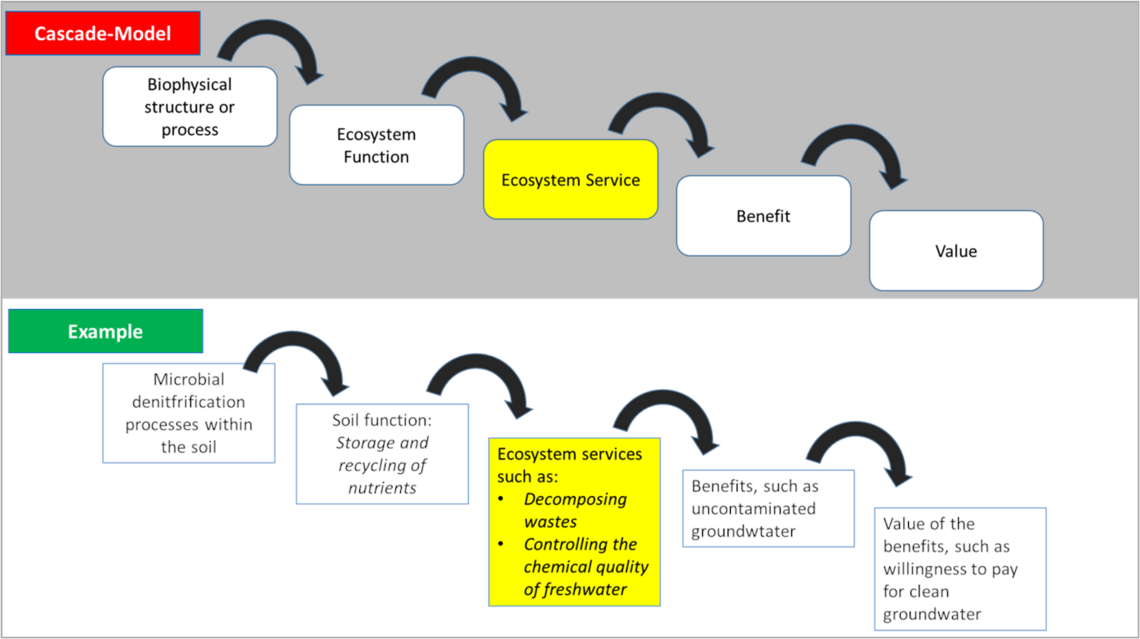
Figure 1: Ecosystem service cascade model and example for a soil related cascade. Own representation based on Potschin & Haines-Young (2011)
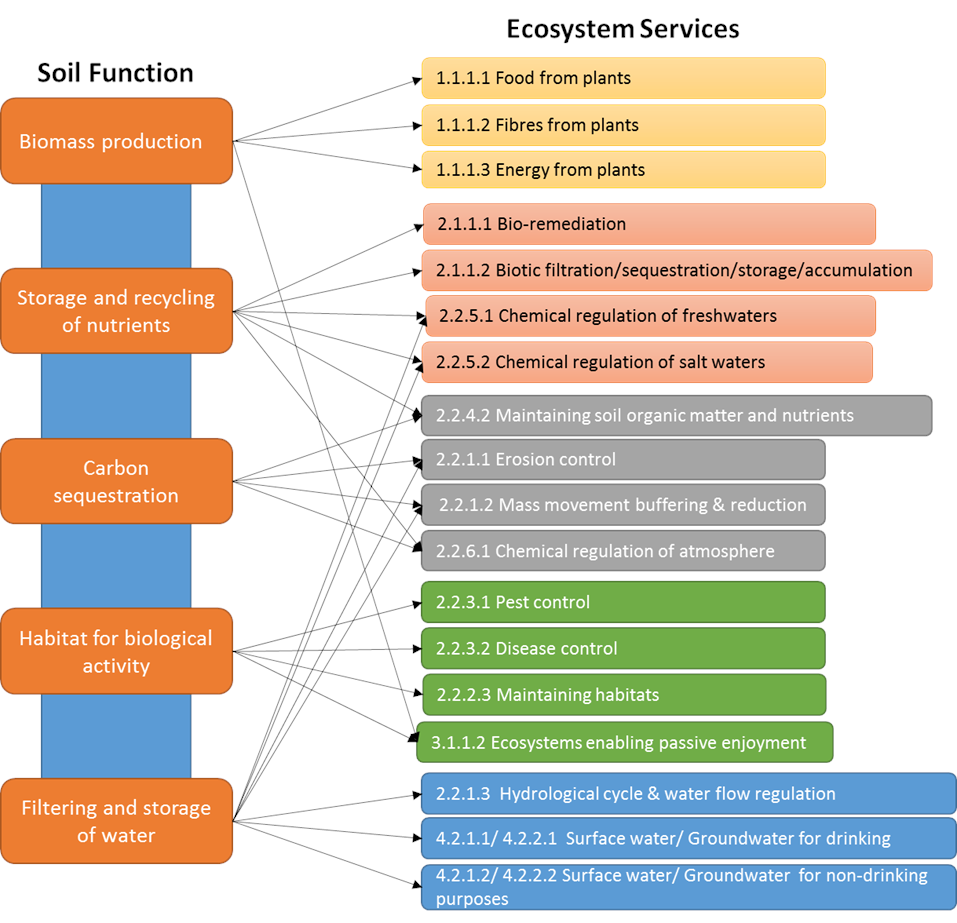
Figure 2: Connection between soil functions and selected soil related ecosystem services. Please note that all soil function are connected to and influencing each other.
How can ecosystem services be considered in assessments of soil management?
In the context of impact assessments, we consider those ecosystem services to be soil related that are either based exclusively on soil functions (i.e. purification of water during its passage through the soil matrix), or where soil functions make a significant contribution to the final service (i.e. aboveground habitats created by plants growing in the soil.). Both types of soil related ecosystem services have in common that they are affected by agricultural management.
Impact assessments need to account for the fact that agricultural management always implies trade-offs between different ecosystem services. Each management option will enhance the provision of some ecosystem services while reducing the provision of others. Where impact assessments only consider a selected number of services, this selection may therefore already determine the assessment results. Depending on which ecosystem services are considered, assessments will find different policy options to have the most positive impacts. Sound research design is required to safeguard against such arbitrariness and potential for manipulation (see section on Impact Area Selection), and to instead highlight the trade-offs between options.
For the assessment of ecosystem services, the BonaRes Assessment Platform uses the Common International Classification of Ecosystem Services (CICES) (Haines-Young & Potschin, 2018) which provides a complete and standardized classification scheme designed to support accounting of ecosystem services. CICES has a strictly hierarchical, five-level structure, organized from bottom to top into: section, division, group, class and class type. Three sections provided by the biotic components of ecosystems are distinguished: Provisioning, Regulation & Maintenance and Cultural. In an extension introduced in 2018 with CICES version 5.1, abiotic sections for Provisioning, Regulation & Maintenance and Cultural services were added. Figure 3 shows how the production of cereals as food crops fits into the CICES hierarchy.
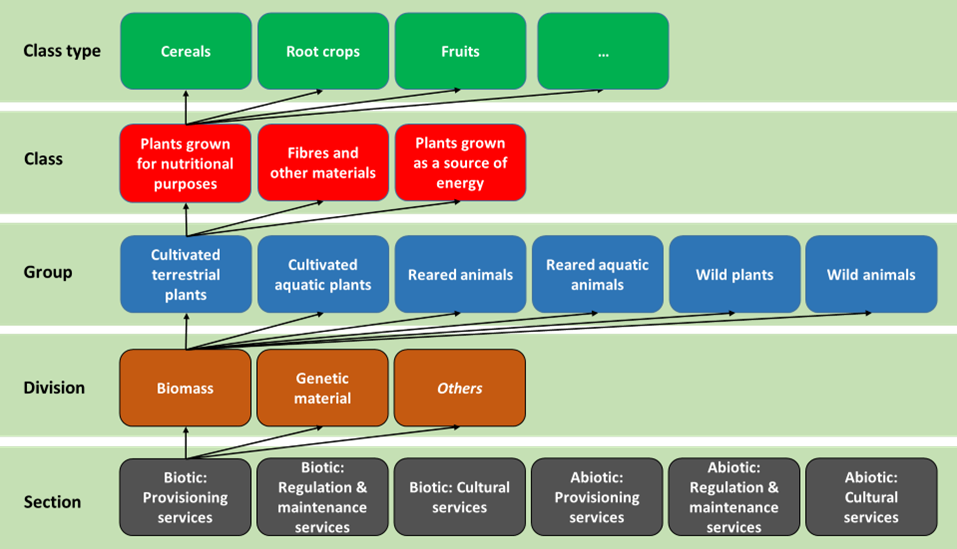
Figure 3: CICES 5.1 hierarchy from section to class type: Example of cereals produced as food crops.
In total, there are 84 ecosystem service classes in CICES. In a preliminary assessment conducted by the author, half of them (42) were considered to be related to agricultural soils and their management (Tables 1 and 2). These service classes are mainly from the biotic regulating and maintenance section. In the context of the BonaRes assessment platform, soil related ecosystem service classes are considered potential impact areas. Though multiple correlations exist between ecosystem services, these correlations are very difficult to account for in the design of measurements. Published studies generally assess ecosystem services individually and only address correlations between them as part of their results and discussion. This approach is also followed in the methods presented on the BonaRes Assessment Platform.
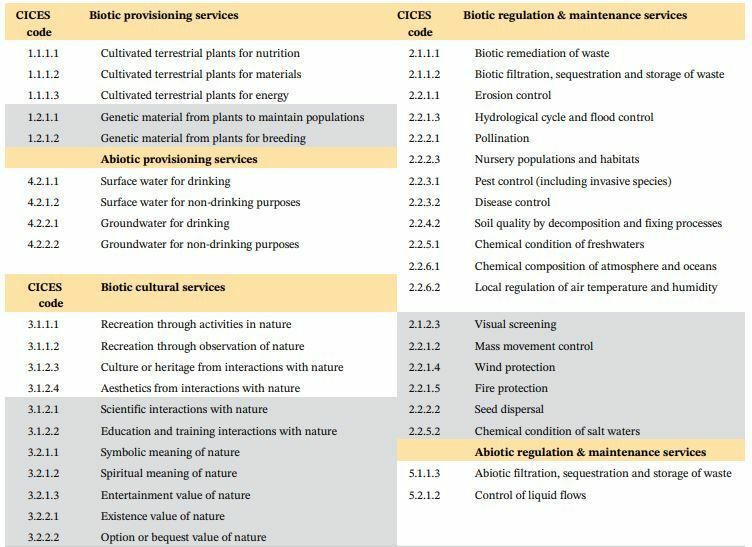
Table 1: Soil management-related ecosystem services. Twenty-five services are typically affected by agricultural soil management (white background) and comprise a short list that should be considered in any impact assessment of soil management. Fifteen services (grey background) are only relevant within specific contexts (e.g., geographic peculiarities or special land uses). Common International Classification of Ecosystem Services (CICES) class names were simplified to aid intuitive understanding.
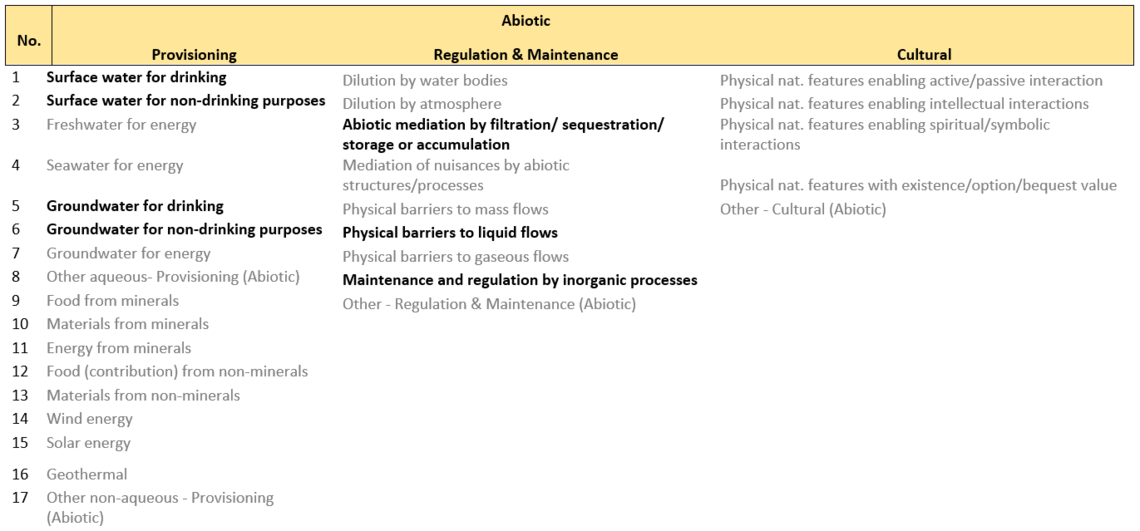
Table 2: CICES V5.1 (Common International Classification of Ecosystem Services) abiotic ecosystem service classes. Class names were simplified by us to allow for a better overview. Classes considered relevant for the assessment of soil management and soil functions changes are marked in black.
References
Costanza R, d'Arge R, de Groot R, Faber S, Grasso M, Hannon B, Limburg K, Naeem S, O'Neill R, Paruelo J, Raskin R, Sutton P, van den Belt M. 1997. The value of the world's ecosystem services and natural capital. Nature 387 (6630): 253–260.
Haines-Young R, Potschin M B. 2010. The Links Between Biodiversity, Ecosystem Services and Human Well-Being. In: Raffaelli D, Frid C (eds.) Ecosystem Ecology: A New Synthesis. Ecological Reviews, Cambridge University Press, Cambridge, United Kingdom, 110–139. DOI:10.1017/CBO9780511750458.007
Haines-Young R, Potschin M B. (2018): Common International Classification of Ecosystem Services (CICES) V5.1 and Guidance on the Application of the Revised Structure. Available from www.cices.eu
Helming, K., K. Diehl, D. Geneletti, H. Wiggering. 2013. Mainstreaming ecosystem services in European policy impact assessment. Environmental Impact Assessment Review 40:82-87.
MEA (Millennium Ecosystem Assessment). 2005. Ecosystems and Human Well-being: Synthesis. Island Press: Washington, DC.
Potschin-Young M, Haines-Young R, Görg C, Heink U, Jax K, Schleyer C. 2017. Understanding the role of conceptual frameworks: Reading the ecosystem service cascade. Ecosystem Services. DOI:10.1016/j.ecoser.2017.05.015
TEEB (The Economics of Ecosystems and Biodiversity). 2010. Mainstreaming the Economics of Nature: A Synthesis of the Approach, Conclusions and Recommendations of TEEB. Online: https://bit.ly/1UkiSrI (accessed 09 August 2019)
-
Ecosystem Services
- Resource Use Efficiencies
